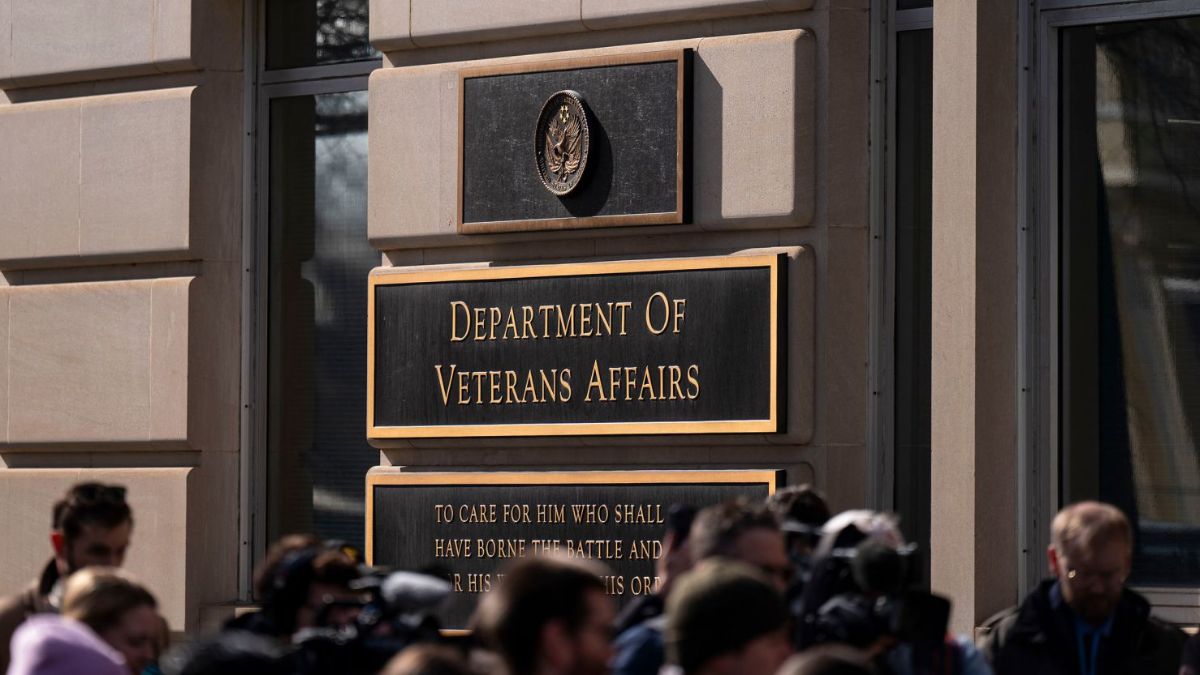The Department of Veterans Affairs (VA) has officially confirmed a large-scale workforce reduction, with 30,000 positions set to be cut by the end of fiscal year 2025. The announcement follows several months of internal debate, during which initial proposals suggested trimming as many as 80,000 jobs.
As of January 2025, the VA employed nearly 484,000 staff members, making it one of the largest federal agencies in the country. By June, that number will fall to 467,000, with another 12,000 roles expected to be eliminated by September 30. This would bring the VA’s projected headcount to 455,000 by year-end, a reduction of about 7% of its total workforce.
A Shift from Original Proposals
The department’s decision marks a major policy adjustment. While the original idea of an 80,000-person cut triggered significant opposition from unions, veterans’ advocacy groups, and lawmakers, the revised plan aims for a more measured downsizing.
Veterans’ organizations had warned that deeper cuts would compromise health care and benefit delivery to nearly nine million veterans who rely on the VA for medical, housing, and financial support. The scaled-back target has been positioned as a compromise, balancing cost savings and efficiency while avoiding service disruption
Methods for Reducing Staff
The VA is pursuing multiple strategies to implement the cuts without resorting to widespread layoffs. Among these approaches are:
- Hiring Freeze: Most new hiring will be paused, with exceptions for mission-critical roles in health care, benefits processing, and essential services.
- Voluntary Early Retirement Authority (VERA): Eligible employees will be encouraged to retire early, reducing the need for forced separations.
- Deferred Resignation Program (DRP): Employees who opt to leave will be allowed to transition gradually, minimizing abrupt gaps in staffing.
- Natural Attrition: Regular retirements and voluntary departures will account for a significant share of the reduction.
By leaning on these methods, the department hopes to reduce headcount organically while maintaining continuity in frontline operations.
Ensuring Veterans’ Services Are Protected
VA Secretary Doug Collins has repeatedly assured the public that the staffing reductions will not compromise the delivery of veteran care or benefits. In his statement, Collins emphasized that the VA remains “fully committed to ensuring every veteran continues to receive the support and services they deserve.”
To reinforce this pledge, the VA has exempted over 350,000 mission-critical roles—primarily in health care and claims processing—from the hiring freeze. This measure seeks to guarantee that medical services, disability claims, and housing assistance continue uninterrupted.
Recent Efficiency Improvements
The department points to recent efficiency gains as evidence that it can serve veterans effectively even with fewer employees. For example, the VA has successfully reduced its disability claims backlog by 30% in the past year, a significant achievement that has been cited as proof of improved systems and modernization.
Officials have also highlighted ongoing digital initiatives, including expanded telehealth services, faster claims processing technology, and efforts to streamline bureaucratic procedures. These reforms are expected to play a key role in absorbing the impact of the staff cuts.
Stakeholder Reactions
Veterans’ Groups Raise Concerns
Despite assurances from the VA, many veterans’ advocacy organizations remain uneasy. Common Defense, a leading advocacy group, argued that even the reduced cuts could worsen access to health care.
Jose Vasquez, the group’s executive director, stated: “Cuts to 30,000 jobs mean more veterans will struggle to receive the care they need. This is not just about numbers; it’s about lives.”
Advocates worry that the reduced workforce could lengthen wait times for medical appointments, slow down benefits processing, and create additional hurdles for veterans seeking assistance.
Union Leaders Cautiously Supportive
Union leaders have reacted with a mix of relief and caution. Everett Kelley, president of the American Federation of Government Employees (AFGE), welcomed the scaled-back plan compared to the original 80,000-job proposal. However, he stressed that 30,000 cuts are still substantial and could strain already overburdened employees.
Kelley warned that service delivery could suffer if the VA fails to ensure adequate staffing levels in high-demand areas, particularly as the population of veterans continues to grow and diversify.
The Political Landscape
The VA’s decision comes at a politically sensitive moment. Lawmakers from both parties have pledged to protect veterans, often framing their care as a “sacred obligation.” Proposals to reduce the agency’s workforce have historically drawn intense scrutiny, and the 2025 cuts are no exception.
Several members of Congress have already called for oversight hearings to ensure that the reductions do not translate into diminished services. Meanwhile, fiscal conservatives have welcomed the move, arguing that the VA has grown too large and bureaucratic in recent years.
Budgetary Pressures Driving Change
Behind the decision lies mounting budgetary pressure. The VA remains one of the largest federal agencies in terms of both workforce and spending. With federal deficits increasing, the administration has sought ways to curb costs while prioritizing efficiency.
The agency’s budget will continue to be heavily scrutinized in the coming fiscal cycles, making workforce management a central issue for both policymakers and the public.
What Comes Next for the VA?
The department has outlined a timeline for completing the cuts by September 2025, with periodic updates expected throughout the process. Officials say they will monitor the effects closely, adjusting strategies if disruptions to veteran services emerge.
In parallel, the VA will continue pushing modernization efforts, including expanded digital claims processing, upgraded medical technology, and improved outreach to underserved veteran communities.
Long-Term Outlook
While the staffing reductions represent a dramatic change, the VA has framed them as part of a broader transformation. The agency insists it is moving toward a leaner, more modernized structure—one that will focus on efficiency, innovation, and improved service delivery.
If successful, the reforms could reshape the VA into a more agile organization. If not, critics warn, the cuts could create gaps in care at a time when veterans’ needs are increasing.
5 FAQs
Q1. How many jobs is the VA cutting by 2025?
The VA has confirmed it will reduce its workforce by 30,000 positions by the end of fiscal year 2025.
Q2. Will veterans’ services be affected by these cuts?
The VA has assured the public that veterans’ health care and benefits will not be disrupted, as over 350,000 mission-critical roles will remain untouched.
Q3. How is the VA reducing its workforce without layoffs?
The department is relying on natural attrition, early retirements, hiring freezes, and voluntary resignations rather than forced layoffs.
Q4. Why is the VA cutting jobs now?
The reductions are part of an effort to streamline operations, modernize systems, and address budgetary pressures, while avoiding unnecessary bureaucracy.
Q5. What concerns have veterans’ groups raised?
Advocacy groups argue that even with the scaled-back plan, cuts could increase wait times, slow claims processing, and strain staff, ultimately affecting veterans’ care









